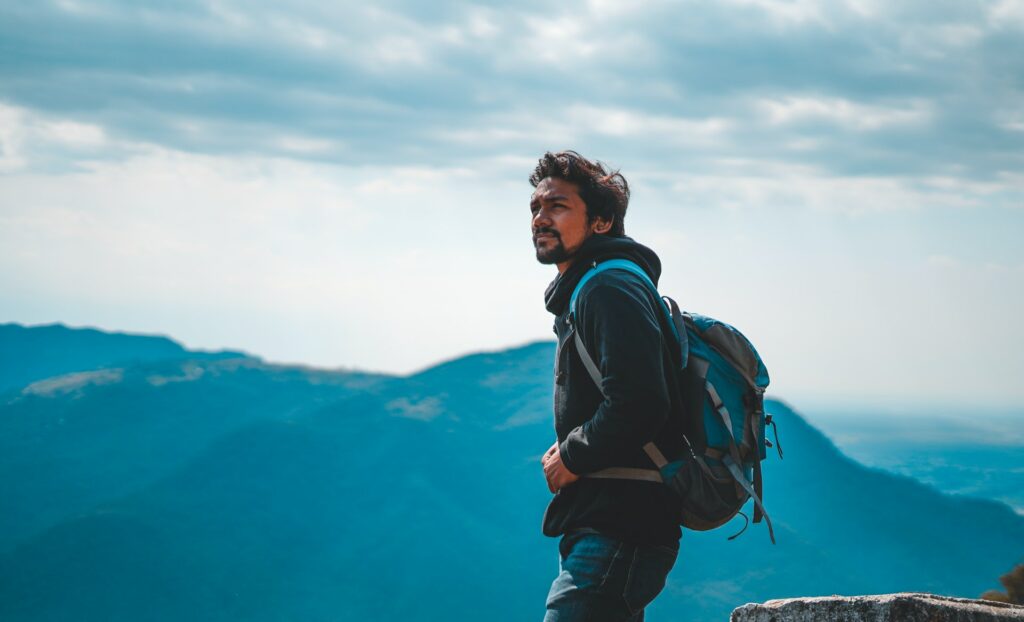Between a Rock and a Hard Place: Is There a Future for Tours & Activities Direct Marketing Post COVID?

By Matthew Barker, Founder, Horizon Guides
There’s been a lot of chatter, spilling into anger, about the way the tours & activities (T&A) value chain is configured and the impact that big intermediaries and ad platforms are having on downstream operators. Enough ink has been spilled on the relative merits and demerits of both and at some point we need to accept that this is a pointless dichotomy. OTAs and PPC are part of a healthy mix along with direct channels like organic search, email, an effective website and PR/brand building and so on. These things aren’t mutually exclusive and they each have their pros and cons to live with. (There’s a good summary on this here from Christian Watts.)
To move the conversation forwards I want to address what direct travel marketing looks like in COVID-era 2020. Historically this revolved around organic search (SEO), which has changed beyond recognition over the last 10 years or so. There was once a time that SME tour operators could conceivably rank their sites for bottom funnel keywords (“tours to X destination”) but, as I’ve been saying for years, those days are long over. Not only is it effectively impossible to dislodge the bigger, longer-established and deeper-pocketed sites but you’re also increasingly competing against Google Travel itself as it funnels high-intent searches into its own walled gardens and travel ad products.
Old school SEO has given way to a content-driven, omni-channel approach, messily labelled “content marketing” but organic search is still the key pillar in traffic acquisition. Whether or not it’s still viable for SME operators in the T&A segment is another question.

To illustrate the issue let’s follow one user’s journey through the Horizon Guides site over the course of several months.
In January 2020, presumably in blissful ignorance of the coming chaos, our user discovered the Horizon site while researching a biking trip to Chile.
We have lots of excellent partners for Chile and cycling holidays, but most Horizon users aren’t ready to book a trip on their first visit. This makes perfect sense—our guides are for forward trip planning; people find us when they’re researching big-ticket and complex trips so we don’t expect everyone to connect and book right away.
We’re equally happy for users to read our guides, order a free guidebook, perhaps subscribe to our emails, and go about their day.

But even if she was prepared to book a biking trip to Chile, 2020 had other ideas for this particular user, along with the rest of the world.
With Chile sadly out of the question she started looking closer to home and, six weeks later, opened an email from Horizon with our guide to long-distance hikes and walking holidays in the UK.
After reading this second guide and with another week of consideration she returned to the Horizon site for a third time in two months and contacted one of our UK walking partners who created and sold a custom self-guided walking itinerary to Scotland.
The Google Analytics conversion path report gives an overview of what these multi-stage journeys and various touchpoints look like:

With big-ticket multi-day trips this type of omni-channel customer journey is all par the course. But even before the covid disruption it all added up to some pretty major challenges for SME operators trying to develop their direct presence.
Content depth, breadth & frequency
On face value it’s (relatively) straightforward to get a page of longtail content in the search results. But to sell a tour package today via SEO, you needed to have published a great piece of content maybe 12 months ago; enough time for it to rank in the search engines and reach someone when they were still early stage planning for a future trip. To rank, the content needed to be professionally-written, well-researched and be packed full of original detail. And, because longtail SEO is all about lots of small searches adding up to a significant volume of traffic, you probably needed to have published hundreds of similar pages in order to contribute to a material number of bookings.
The long & winding path to purchase
We know it can take weeks, months, sometimes years, for people to move through the customer journey and book a big-ticket trip, with multiple touchpoints (and competing distractions) along the way. This makes the “marketing funnel” a pretty tenuous concept—more akin to a sieve than a funnel. It may still be possible to acquire longtail search traffic but, by definition, few of those visitors will be ready to book. To utilise this traffic operators need to layer in complementary channels like email and remarketing to retain and nurture the audience up to the point of booking. Each of these represents an additional demand in content creation, management, and analytics.
ROI and attribution
On the subject of analytics, few SMEs are anywhere near close enough to attributing ROI across all these channels and activities. Thanks to (free) Google Analytics we’re well accustomed to last click attribution, but tracking behaviour over multiple devices and touchpoints over many months is another matter entirely. Even big, well-resourced marketing teams with enterprise-level analytics have trouble putting dollar values to content creation efforts that, at best, assist conversions over a period of ~12 months. Very hard, if not impossible, for most SMEs who are left with the spray and pray method of content marketing.
Sidebar: Single destination operators are at a further handicap because they, unlike their global competitors and OTAs, will typically only ever sell to each customer once. Most travellers visit a long-haul destination once which means after all that hard work and expense, the lifetime value (LTV) of a customer is an order of magnitude lower than for a business that can re-sell multiple tours to different destinations year after year.
All in all, despite content marketing now well established in the mainstream, and longtail SEO still theoretically possible, it’s clear that content creation, channel management and analytics present some pretty major hurdles. You can see why lots of operators either do it haphazardly or just don’t bother, especially when both OTAs and Google Ads offer a simpler, if more expensive, alternative.
And now we’re in full crisis survival mode with so much doubt about what the segment will look like coming out the other side. The question has to be, is any of this going to be a worthwhile endeavour? I can’t imagine many SME tour operators having the resources or time to be investing in content and omni-channel marketing to the standards required.
But that’s not to say direct sales/marketing is dead. There is now an emerging category of platforms that seek to reduce some of the friction, help operators develop their own direct business, bring individual operators into a single place, and spread the costs of audience acquisition without trying to own the sale or customer relationship. In other words aggregating without intermediating. Our site, Horizon Guides, fits into this group , as does Glasgow-based Touriosity and Finland-based startup Toristy. Now could be an interesting time for the emergence of new models and approaches.
One thing is for certain: when there’s so much antipathy between each level of the value chain, the landscape is ripe for disruption and new approaches to cracking old problems. Direct might look very different, but don’t write it off just yet.
Note: This article was originally posted on Matthew Barker’s LinkedIn Article.






Responses